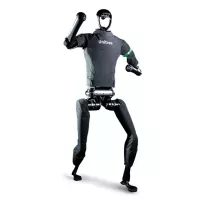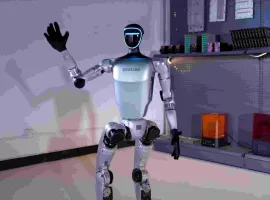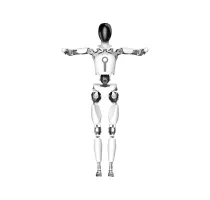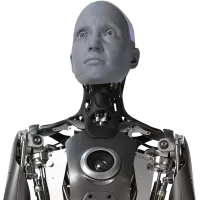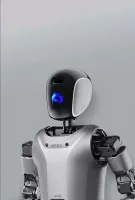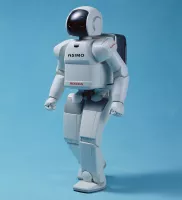Boston Dynamics Atlas Specifications
Ranked Nr. 1 of 39 Humanoid Robot

Atlas, Boston Dynamics' most dynamic humanoid robot, is designed with a focus on advanced mobility and dexterity. This robot is fully electric and utilizes an intricate hydraulic system, making it capable of complex, agile movements. Atlas is equipped with 28 joints and advanced control algorithms that enable it to execute tasks with high precision and adapt to its environment. The robot’s design allows it to perform physically demanding tasks like running, jumping, and even executing backflips, demonstrating significant advancements in humanoid robotics.
Atlas is notable for its construction materials and structural design, which emphasize a high strength-to-weight ratio. The robot incorporates titanium and aluminum, extensively using 3D printing technology to optimize its frame for robustness while maintaining a relatively low weight of 89 kg. This engineering approach grants Atlas the ability to perform dynamic movements and actions, such as somersaults and balancing tasks, which require both strength and lightweight components to maintain high levels of performance and efficiency.
The potential applications of Atlas extend beyond demonstrations of agility and power. Boston Dynamics leverages Atlas to explore the practical uses of humanoid robots in real-world scenarios that require a blend of human-like mobility and robotic precision. While Atlas is primarily a platform for research and development, its capabilities hint at future roles in scenarios like disaster response, where navigating hazardous or complex terrains is necessary, or in jobs that require high levels of mobility and manipulation skills. Atlas represents a significant step toward the integration of humanoid robots into everyday tasks and environments.
| Power |
|
| Product mass | 89 kg |
| Top Speed | 2.5 m/s |
| Height | 1.5 m |
| Industry |
|
| Application |
|



